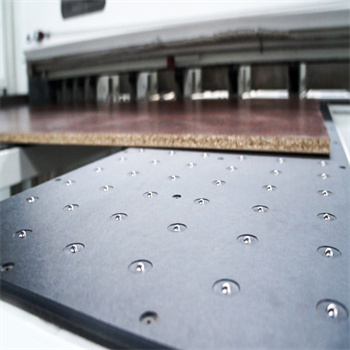Types of Wood Board Sizing Machines
2024-07-19
A wood board sizing machine is an essential tool in woodworking and lumber processing industries. It is designed to cut, shape, and size wood boards to precise dimensions. These machines come in various types and configurations, each suited for different tasks and production scales. Here's a detailed overview:
Types of Wood Board Sizing Machines:
1. Table Saws:
- Purpose: Used for straight cuts along the length or width of wood boards.
- Features: Adjustable fence, miter gauge, and varying blade sizes.
- Applications: Ideal for rip cuts, crosscuts, and miter cuts.
2. Panel Saws:
- Purpose: Designed for cutting large sheets of wood into smaller panels.
- Features: Vertical or horizontal operation, sliding table for precise cuts.
- Applications: Commonly used in cabinet making and large-scale wood processing.
3. Planers:
- Purpose: Used to produce smooth, flat surfaces and uniform thickness on wood boards.
- Features: Adjustable cutting depth, wide feed rollers, and sharp blades.
- Applications: Essential for ensuring uniform thickness and smooth finishes.
4. Jointers:
- Purpose: Used to create flat surfaces along the edges of wood boards.
- Features: Adjustable infeed and outfeed tables, sharp cutter heads.
- Applications: Used for preparing edges for gluing or jointing.
5. Band Saws:
- Purpose: Used for cutting curves, irregular shapes, and resawing wood boards.
- Features: Continuous loop blade, adjustable guides, and varying blade widths.
- Applications: Versatile for both straight and intricate cuts.
6. Radial Arm Saws:
- Purpose: Used for crosscutting, ripping, and dado cuts.
- Features: Arm-mounted saw blade that moves over a stationary workpiece.
- Applications: Ideal for making crosscuts and compound angle cuts.
7. CNC Routers:
- Purpose: Computer-controlled machines for precise cutting, shaping, and detailing.
- Features: Automated operation, programmable patterns, and high accuracy.
- Applications: Used for intricate designs, carvings, and mass production.
Key Features:
1. Adjustable Cutting Depth:
- Allows for precise control over the thickness of the cut.
2. High Precision:
- Ensures accurate sizing and shaping of wood boards.
3. Safety Mechanisms:
- Includes features like blade guards, emergency stop buttons, and dust extraction systems.
4. Robust Construction:
- Built with durable materials to withstand heavy use and provide stability.
Benefits:
1. Efficiency:
- Increases productivity by automating and speeding up the cutting and sizing process.
2. Precision:
- Provides consistent and accurate cuts, reducing material waste.
3. Versatility:
- Capable of handling various wood types and sizes for different applications.
4. Safety:
- Modern machines are equipped with safety features to protect operators.
Applications:
1. Furniture Making:
- Used to size and shape wood components for furniture pieces.
2. Cabinetry:
- Essential for cutting panels and components for cabinets and shelving.
3. Construction:
- Used in preparing lumber for framing, flooring, and other structural elements.
4. Artisan Woodworking:
- Ideal for creating custom wood products and detailed carvings.
Maintenance and Safety Tips:
1. Regular Maintenance:
- Keep blades sharp, clean, and properly aligned. Lubricate moving parts as needed.
2. Proper Training:
- Ensure operators are trained in machine use and safety protocols.
3. Safety Gear:
- Use appropriate personal protective equipment (PPE), such as safety glasses, hearing protection, and gloves.
4. Dust Management:
- Use dust collection systems to maintain a clean and safe working environment.
Conclusion:
A wood board sizing machine is a versatile and indispensable tool in woodworking and lumber processing. By choosing the right type of machine and maintaining it properly, woodworkers can achieve precise cuts, improve efficiency, and ensure safety in their operations.



